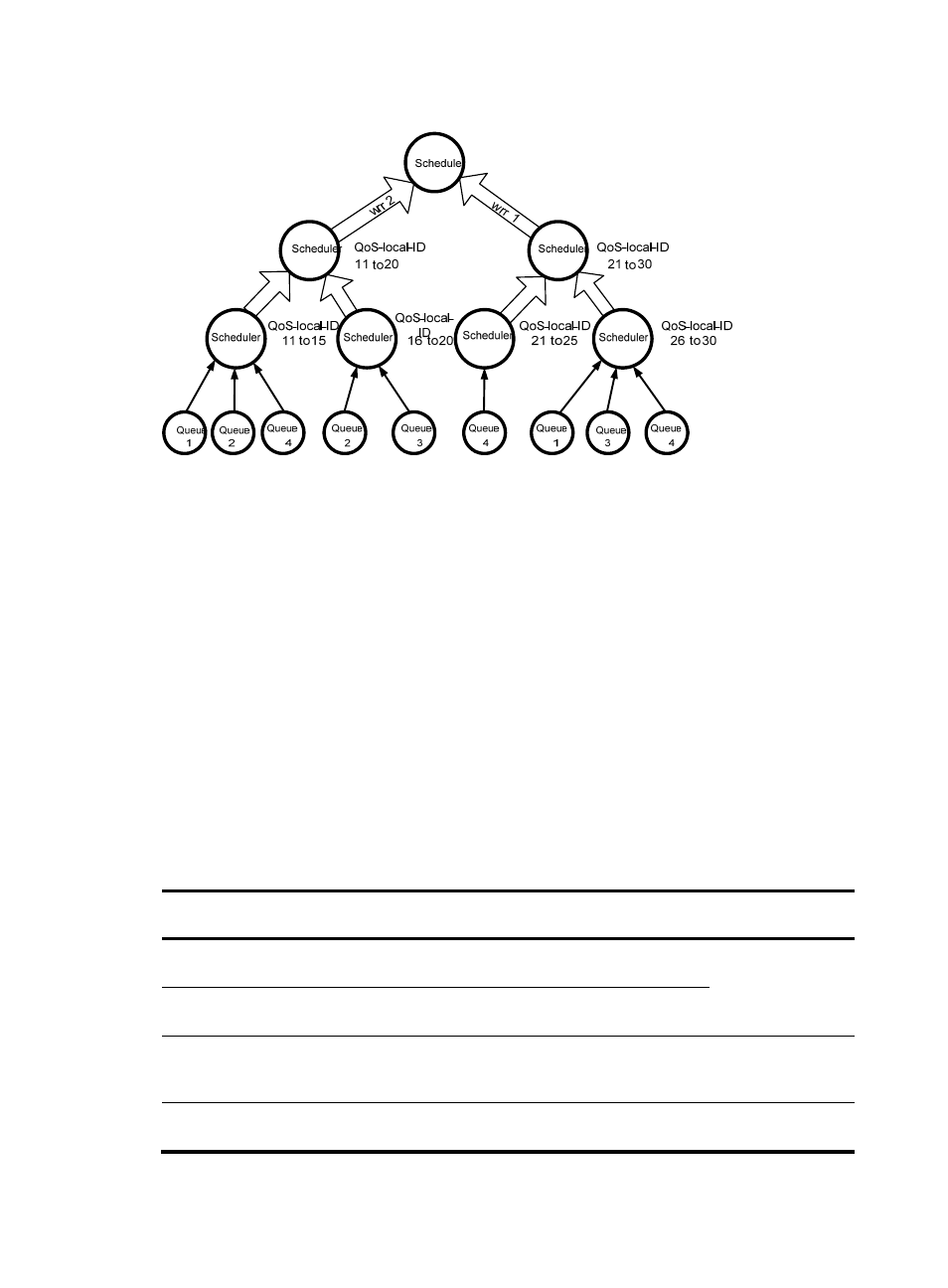Terminology – H3C Technologies H3C SR8800 User Manual
Page 81

72
Figure 25 How HQoS works
Different from traditional single-layer QoS, HQoS manages traffic in scheduling queues at multiple levels
including physical level, logical level, and application level or service level. For example, at the physical
level, you can manage the total bandwidth of physical interfaces; at the logical level, you can manage
the per-user bandwidth of the interface; at the service level, you can manage per-application bandwidth
for a user. Through multi-level traffic management, HQoS helps service providers implement multi-service,
multi-user service management.
Terminology
•
Forwarding class
A forwarding class is a scheduling entity (a leaf node) in the scheduler policy tree. A forwarding
class corresponds to a scheduling queue. Packets are assigned to different scheduling queues
according to the specified mapping rules. The parameters associated with a forwarding class
determine the behavior of the scheduling queue.
As shown in
, the system pre-defines four forwarding classes: BE, AF, EF, and NC, in the
descending order of priority.
Table 6 Predefined forwarding classes
Forwarding
class name
Forwarding class
name expansion
Service type
Forwarding class
type
NC Network
Control
Highest-priority forwarding services, such
as network control packet transmission
High-priority services
EF Expedited
Forwarding
Delay/jitter-sensitive services, such as
voice and video traffic transmission
AF Assured
Forwarding
Services guaranteeing transmission
quality, such as VPN and data packet
transmission
Services
guaranteeing
transmission quality
BE Best
Effort
Best-effort services, such as common
network browsing services
Best-effort services
sp
w
rr
2
gt
s
gt
s